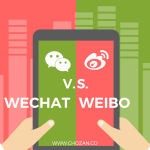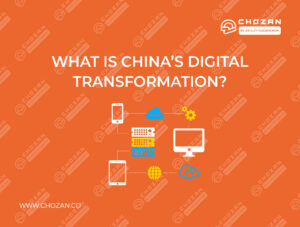Chinese millennials, born in the 80s and 90s, are now hitting prime consumption age. Described as educated, open-minded and tech-savvy, millennials make up 31% of China’s total population, representing about 400 million consumers. By 2025, millennials will make up about three-quarters of the working population in China.
With an average annual income of US $52,000 (RMB ¥373,400), millennial respondents are not only better off financially, they are also more optimistic about their future ability to pay. We can say that the future of the luxury industry is in the hands of Chinese millennials. Respondents from first-tier to third-tier cities bought handbags or jewelry worth more than RMB 10,000 (US $1392) at least once in the past 24 months, with 76% of them millennials.
60% of millennial respondents buy luxury handbags or jewelry at least once a year, and many take inspiration from social media celebrities when it comes to category choices.
Individualistic and Demanding
In order to understand the consumption behavior of Chinese millennials, we have to start with the way they grew up. Due to implementation of the one-child policy in 1979, most are the only child in their family and had parents and grandparents eager to give them the best of everything. They were the center of the universe.
The ‘little prince/princess/emperor’ factor is strong in this generation. They also prioritize their desires instead of their needs. As a result, when it comes to consumption, they are more demanding and more willing to spend.
Among Chinese millennials, there has been outsized spending on smartphones, key fashion accessories, travel, fun experiences and small splurges where brand and quality matter. They want good products and services and they want them fast. They’re happy to spend top dollar for entertaining, personalized retail experiences both online and at brick-and-mortar venues.
In order to meet such needs, many brands have launched personalized customized products. Nike launched “Nike By You” service, which allows customers to customize sneakers from the Nike app and choose colors and materials according to their preferences. Such customized products are popular in China, especially among young people and teenagers who like unique items, and there are more than 10,000 tips on customized sneakers on the popular Xiaohongshu in 2022. If brands want to win the hearts of Chinese millennials, personalized and customized products would be a wise choice.

↑ Customers are able to choose a special pattern or create their own ones on the official e-commerce platform of Nike.
Early Adopters of the Metaverse
Millennials are also the most interested group in the metaverse, second only to Gen Z. Truly engaging them, however, requires offering more than just new ways to shop, but also different media and hobbies that they already enjoy in the real world. The metaverse is the future of the new generation.

Source: Taobao Metaverse
While real-life conversations cannot be replaced by their digital counterparts, the metaverse does provide a richer and more nuanced experience. Although it makes sense for brands to make an in-depth metaverse investment, they still need to maintain a presence in the actual world. The world as we know it is changing, and while older generations may find this unsettling, they have a bright future ahead of them in the metaverse.
Brands can offer their products and consumers a new way to try, enjoy and use them; Such as using virtual stores or virtual reality elements to open doors, or can lead millennials to experience the charm of NFTS to attract millennials who are interested in new things.
Socialize and Shop Heavily Online
Moreover, Chinese millennials grew up during China’s economic reforms that brought increasing global connectivity. They are eager to portray themselves as a global citizen as they have witnessed the transformation of the country from a closed and backward nation to now the world’s second largest economy. They love to show friends and families their close connection to the rest of the world by buying standout and niche foreign brands that can demonstrate their one-of-a-kind tastes, which also distinguish them from others.
They are far more educated and globally aware than their parents. They’re active on the Internet and social media, mainly because most of them do not have siblings to play with and hence turn to the virtual world as a means of socializing and entertainment. Therefore, it’s no surprise that they’re savvy online and mobile shoppers.
Currently many brands have already merged their e-commerce with social media so as to increase brand exposure and facilitate the mobile shopping experience. Early in April, Longchamp launched a WeChat mini program dedicated to bag customization and purchase.
Longchamp’s My Pliage® Signature custom series is popular among young consumers on mini programs, and many brands have now combined e-commerce with social media to increase brand exposure and facilitate the mobile shopping experience. Longchamp launched a Wechat mini program to customize and buy bags. The luxury brand has been promoting Le Pliage Cuir Backpack on their mini program this year.
Customers were able to choose the color of the bag and print alphabets on them. After personalizing the product, customers can make the order and pay right away via WeChat Pay, which is already really popular among Chinese youngsters. This integration of socializing and mobile shopping perfectly caters to the preference of Chinese millennials.
↑ Longchamp’s WeChat mini program for bag customization and purchase.
Value Word of Mouth
Social recommendations and word of mouth play an increasingly important role in the consumption process of Millennials. Since they spend plenty of time on social media, they are highly influenced by their peers, as well as the Key Opinion Leaders (KOLs). Therefore, brands have been increasingly adopting the KOL or KOC approach or even the “KOL+KOC” strategy to promote their products and drive sales.
For FILA, a fashion and sports brand with a 100-year history, keeping the brand youthful and relevant is a major challenge. In the first half of 2022, Liu Geng Hong, who is a top-stream Internet celebrity as well as an ‘offline’ star, led to the gym boom “Liu Geng Hong Girls”. Liu Genghong has grown more than 60 million fans in half a month, and even attracted many young people who don’t usually exercise to participate in fitness.
In early May 2022, FILA advertisement was implanted in Liu Geng Hong’s broadcasting room for the first time, and he and his wife have put on a full set of FILA sportswear for live dance. In the TIK Yin flagship store of FILA, LIU Geng Hong’s down jacket of the same style, whose price is nearly 3,000 yuan, has sold more than 10,000 yuan a month. The campaign was successful in attracting public attention to FILA sportswear and creating positive word of mouth for the brand.
Source: Weibo
Such larger KOL campaigns, due to the cost, are usually not considered by brands with smaller budgets. However, KOC activities with smaller scale and lower budget are also effective.
The KOC campaign can be used as a fast selling strategy for new products. As long as buyers post a video of the products on social platforms such as Xiaohongshu or Weibo and add the campaign name hashtag, they will have a chance to get a gift. On Xiaohongshu, 39% of users are more likely to view content produced by KOC, and 42% are more interested in quality content itself.
Through Hashtag, brands can tap influential users based on the number of likes and comments posted on their videos, becoming the brand’s KOC. Whenever a brand launches a new product, this group of KOCs becomes a new spokesperson in their circle of friends, recommending and sharing it on social platforms, creating a viral effect that spreads viral.
Prefer Trendy Brands that Resonate with them
Chinese millennials are more likely to favor famous or fashionable brands. They like brands that have a positive and genuine image because they can tell if the brand really understands their needs, concerns and likes, or if it’s just pretending.
They will only be loyal to brands with attributes they affiliate to, and they like to see their lives being portrayed in social media. For instance, Millennials have become an important force in the workplace and face increasing social pressures. According to a 2022 report from Deloitte, 36% of millennials are concerned about the cost of living.
If a brand can address some of the obstacles they may face and recognize their effort, they will easily resonate with it and feel more connected. Hence, inspiring and empathetic brands are highly appreciated, especially when they communicate on the right medium.
Conclusion
Chinese millennials are the main target audience whom marketers should not miss out. They highly cherish individuality and uniqueness, and never hesitate to spend more money in exchange for products and services they want. As they grew up with the Internet, they have already adapted to “living” in a virtual world. Exploring, purchasing and interacting online are their daily routines, which meanwhile enable marketers to approach them via different online channels, including the most popular social media platforms in China. To gain a better understanding of Chinese millennials, Chinese social media may be a good entry point, contact us to know more about social media.
Read more related posts
-
Branding on Chinese Social Media: WeChat v.s Weibo
Weibo and WeChat are the two largest social networking platforms in China. They both exert significant influence in Chinese society and play an indispensable role in modern life. Weibo provides…
-
Branding on Chinese Social Media: WeChat v.s Weibo
Weibo and WeChat are the two largest social networking platforms in China. They both exert significant influence in Chinese society and play an indispensable role in modern life. Weibo provides…
-
Branding on Chinese Social Media: WeChat v.s Weibo
Weibo and WeChat are the two largest social networking platforms in China. They both exert significant influence in Chinese society and play an indispensable role in modern life. Weibo provides…
-
11 Great WeChat Accounts for Chinese Digital Marketing Info
You know that WeChat is a powerful channel to market your business and even sell your products. But what else? Some official WeChat accounts are also great sources of information…
-
Branding on Chinese Social Media: WeChat v.s Weibo
Weibo and WeChat are the two largest social networking platforms in China. They both exert significant influence in Chinese society and play an indispensable role in modern life. Weibo provides…






